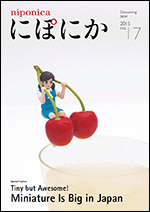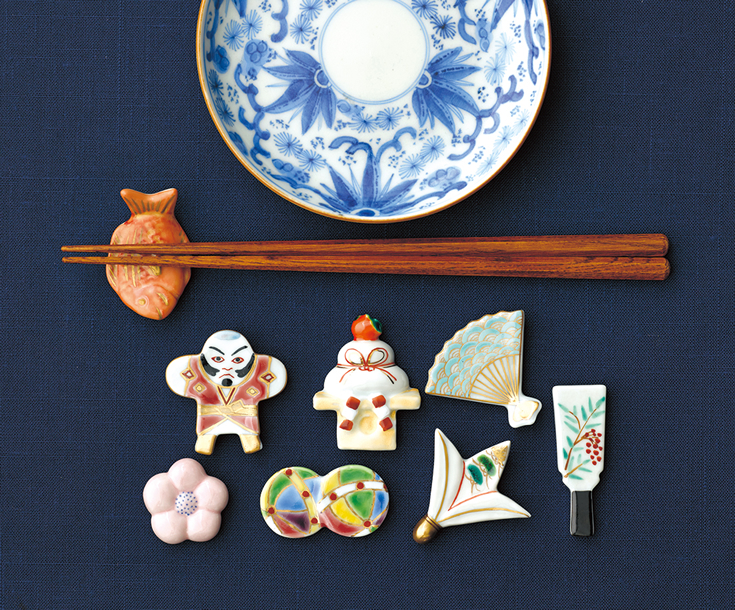niponica is a web magazine that introduces modern Japan to people all over the world.
2015 No.17

To read the e-book you need to have JavaScript enabled in your browser and a free Flash Player plug-in from Adobe Systems Inc. installed.
 Souvenirs of Japan
Souvenirs of Japan

A Touch of Color and Class for the Dining Table
Hashi-oki
Photos: Kuribayashi Shigeki

Hashi-oki (chopstick rests) are small table accessories to lay chopsticks on. They can be found at the dining table serving washoku Japanese cuisine. They not only help to keep the chopsticks clean, but also play a secondary yet vital role in the dining presentation—expressing welcome for everyone at the table and evoking the current season with shapes inspired by nature.
It is said that hashi-oki go back at least to the early Heian period (794-1192), when an earthenware chopstick holder shaped somewhat like an ear was placed in the center of a formal tray of food offered to gods.
The proper way to set chopsticks on a rest is to leave an overhang of about 3 cm measured from the tips. In other words, you do not rest the chopstick tips on it. In countries such as China and Vietnam chopsticks are generally laid vertically to the user, but in Japan etiquette calls for them to be laid parallel with the table edge in front of the meal set. So the hashi-oki is placed to the left of the user.
Recently one can find a vast and colorful variety of hashi-oki for sale. The techniques and designs of traditional craftsmanship are absorbed to them, so you have every chance of finding nice ones for souvenirs. Chopstick rests are objets d’art representing in miniature some aspect of the season, and they will surely bring flair and cheer to your dining table.


